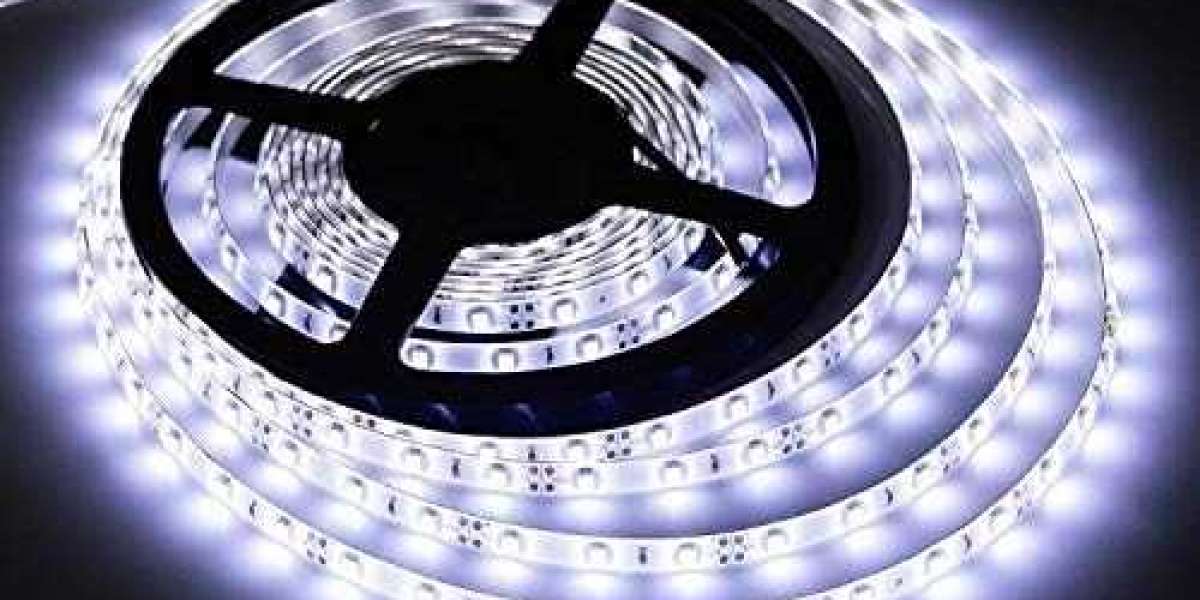How Long Do Led Lights Last
Light Emitting Diodes, or LEDs, have transformed the lighting industry in recent years. These energy-efficient marvels have made their way into homes, electronic devices, and street lamps. LED lights have gained immense popularity, and one of their standout features is their exceptional lifespan. But just how long do LED lights actually last? Let’s explore that in this article.
I. The Lifespan of LED Lights
LED lights far outlast traditional incandescent or compact fluorescent bulbs. On average, a high-quality LED light bulb can last anywhere from 20,000 to 50,000 hours. To put it into perspective, if you use your LED bulb for about three hours a day, it could theoretically last for 13 to 45 years!
Read more: What is Volumetric Lighting in Lighting Design
In comparison, a traditional incandescent bulb lasts around 1,000 to 2,000 hours, and a compact fluorescent bulb lasts for about 8,000 to 10,000 hours. LEDs offer a significantly longer lifespan.
However, the actual lifespan of an LED can vary depending on factors such as the LED’s quality, usage conditions, and frequency of turning it on and off.
Another notable aspect of LEDs is their gradual failure mode. Unlike traditional bulbs that abruptly burn out, LEDs slowly lose their brightness over time. Even after their average lifespan, many LEDs will still produce light, albeit at a lower intensity. This is known as lumen depreciation, which we’ll discuss further in the next sections.
In the next part of this article, we’ll delve into the reasons why LED lights can last so impressively long, exploring the technological and design aspects that set them apart.
II. Why LED Lights Last Longer
The remarkable lifespan of LED lights can be attributed to a combination of design and operational factors. Here are some key reasons:
Energy Efficiency: LEDs are highly efficient in converting electrical energy into light, generating less heat. This is crucial because overheating is a common cause of premature failure in traditional bulbs.
Solid-State Lighting: Unlike conventional bulbs, LEDs are ‘solid-state lights’ that emit light by running electricity through a semiconductor. The absence of a burnable filament or degradable gas greatly enhances their lifespan.
Low Lumen Depreciation: All lights lose brightness over time, but LEDs depreciate at a much slower rate than other types of lights, maintaining their brightness for longer.
Drive Current: The current used to drive an LED also impacts its lifespan. LEDs driven at a lower current tend to last longer.
Heat Management: LEDs are equipped with heat sinks or other thermal management elements to effectively dissipate heat. Without proper heat management, LEDs can degrade and have a shorter lifespan.
Durability: LEDs are more resistant to shock and vibration, reducing the likelihood of failure due to physical damage.
While LEDs themselves can last for many years, other components in the lighting system may fail earlier. Factors such as power surges or poor-quality drivers can also reduce the lifespan of an LED light.
III. The Power of LED Lights
The power of an LED light refers to its electrical consumption, measured in watts. LEDs are known for their high energy efficiency, producing more light (measured in lumens) per watt of energy consumed compared to most other lighting types.
Read more: Edgar M Downs - CEO Founder at BLLS-Lighting
LEDs come in a wide range of power ratings. You can find low-power LEDs consuming fractions of a watt and high-power LED lights or arrays using tens or even hundreds of watts. For residential lighting, a typical LED light bulb might use anywhere from 4 to 20 watts, depending on its brightness.
However, it’s important to note that the power consumption of an LED light doesn’t directly indicate its brightness. Instead, brightness is measured in lumens. LED lights are much more efficient, capable of producing more lumens per watt compared to incandescent or halogen lights. For example, a 10-watt LED bulb can produce as much light as a 60-watt incandescent bulb.
When shopping for LED lights, consider both power consumption (for energy efficiency and operating cost) and lumen output (to assess brightness).
IV. Choosing LED Lights
Now that we understand why LED lights last longer and the relationship between power and brightness, let’s discuss how to choose the right LED light. Here are some tips:
Lumen Output and Power Consumption: Consider both brightness (lumen output) and power consumption (watts) when shopping for LED lights. A high lumen output with low power consumption indicates an energy-efficient bulb.
Color Temperature: LED lights come in different color temperatures measured in Kelvin. Lower temperatures produce warmer, yellow light, while higher temperatures produce cooler, bluer light. Choose the color temperature that suits your needs and preferences.
Quality: The quality of an LED light significantly impacts its lifespan. Investing in high-quality LEDs from reputable manufacturers pays off in terms of longevity and performance.
Application: Consider where and how you’ll be using the LED light. Outdoor lights may require more durability and weather-resistance, while task lighting may need to be brighter than ambient lighting.
Dimming: Not all LED lights are dimmable. If you plan on using dimmer switches, make sure to choose LEDs specifically labeled as dimmable.
Remember, while LEDs have a long lifespan, other factors such as power surges, poor quality drivers, or improper use can shorten their life.
V. Conclusion
LED lights offer an impressive lifespan that far exceeds traditional bulbs due to their energy efficiency, solid-state lighting design, low lumen depreciation, effective heat management, and physical durability. While power consumption doesn’t directly indicate brightness, LEDs outshine other lighting options in terms of light output per watt.
Choosing the right LED light involves considering both power consumption and lumen output, along with factors like color temperature, quality, application, and dimming capability. By making informed choices, you can enjoy the benefits of LED lighting, including significant energy savings and fewer bulb replacements.
Follow us to discover pool lights
We hope this guide has illuminated the lifespan of LED lights and helped you choose the right ones for your needs. Here’s to a brighter, more energy-efficient future with LED lighting!
Frequently Asked Questions
Q: How long do LED lights typically last?
A: On average, high-quality LED lights can last anywhere from 20,000 to 50,000 hours.
Q: How does the lifespan of LED lights compare to traditional bulbs?
A: LED lights last significantly longer than traditional incandescent or compact fluorescent bulbs. While LED lights can last for several decades, traditional bulbs typically last only a few thousand hours.
Q: Do LED lights gradually lose brightness over time?
A: Yes, over time, LEDs may experience lumen depreciation, resulting in a gradual decrease in brightness. However, even after their average lifespan, LEDs still produce light, albeit at a lower intensity.
Q: Can factors other than the LED itself affect the lifespan of LED lights?
A: Yes, other factors such as power surges, poor quality drivers, or improper use can impact the lifespan of LED lights. It’s important to choose high-quality components and use them correctly to maximize their lifespan.
Q: How do I choose the right LED light for my needs?
A: Consider factors such as lumen output, power consumption, color temperature, quality, intended application, and dimming capability when choosing an LED light. Assessing these factors will help you find the most suitable option for your requirements.







